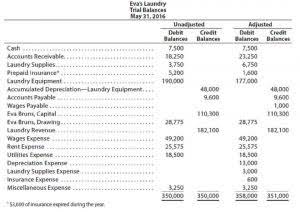
Liabilities are financial obligations a business owes to other persons, businesses and governments. Short-term liabilities are financial obligations that become due within a year, while long-term liabilities are due in a year or longer. A company’s total liabilities is the sum of its short-term and long-term liabilities.
Types of liabilities on a balance sheet
Most bond issues are sold in their entirety when market conditions are favourable. However, more bonds can be authorized in a particular bond issue than will be immediately sold. Long-term which of the following are long-term liabilities? liabilities can help finance the expansion of a company’s operations or buy new equipment or property. They can also finance research and development projects or fund working capital needs.
Basic Accounting Equation

The difference is that BDCC is recognizing a receivable from Bendix while Bendix is recognizing a payable to BDCC. Sandra Habiger is a Chartered Professional Accountant with https://www.bookstime.com/ a Bachelor’s Degree in Business Administration from the University of Washington. Sandra’s areas of focus include advising real estate agents, brokers, and investors.
Examples of Current Liabilities
It is used to help calculate how long the company can maintain operations before becoming insolvent. The proper classification of liabilities as current assists decision-makers in determining the short-term and long-term cash needs of a company. For example, assume that each time a shoe store sells a $50 pairof shoes, it will charge the customer a sales tax of 8% of thesales price.
- However, your mortgage payments that are due in the current year are the current portion of long-term debt.
- The current portion of long-term debt is separated out because it needs to be covered by liquid assets, such as cash.
- These debts are usually in the form of bonds and loans from financial institutions.
- The proper classification of liabilities as current assists decision-makers in determining the short-term and long-term cash needs of a company.
- However, with today’s technology, it is more common to see the interest calculation performed using a 365-day year.
Where Are Long-Term Liabilities Listed on the Balance Sheet?

If you know that you’ll be paying the tax within 12 months, it should be recorded as a current liability. Notes payable is similar to accounts payable; the difference is the presence of a written promise to pay. A formal loan agreement that has payment terms that extend beyond a year are considered notes payable. If you have a loan or mortgage, or any long-term liability that you’re making monthly payments on, you’ll likely owe monthly principal and interest for the current year as well.
For example, a company can hedge against interest rate risk by entering into an agreement. Read on as we take a closer look at everything to do with these types of liabilities, such as how you calculate them, how they’re used, and give you some examples. The combination of the last two bullet points is the amount of the company’s net income.
- No journal entry is required for this distinction, but some companies choose to show the transfer from a noncurrent liability to a current liability.
- Assuming that you owe $400, your interest charge forthe month would be $400 × 1.5%, or $6.00.
- Investors are able to choose bonds with a term that agrees with their investment plans.
- Short-term liabilities are financial obligations that become due within a year, while long-term liabilities are due in a year or longer.
- The receivable was converted to a 5%, 60-day note receivable dated December 5, 2023.
- The company can face penalty if the loan repayment is not made within the time period.
If misrepresented, the cash needs of the company may not be met, and the company can quickly go out of business. Car loans, mortgages, and education loans have an amortizationprocess to pay down debt. Amortization of a loan requires periodicscheduled payments of principal and interest until the loan is paidin full. Every period, the same payment amount is due, but interestexpense is paid first, with the remainder of the payment goingtoward the principal balance. When a customer first takes out theloan, most of the scheduled payment is made up of interest, and avery small amount goes to reducing the principal balance.
- An account payable is usually a less formal arrangement than a promissory note for a current note payable.
- Income taxes are discussed in greater detail inRecord Transactions Incurred in Preparing Payroll.
- When real property is legally pledged as security for the bonds, they are called mortgage bonds.
- Long-term liabilities are a form of debt that is expected to be paid beyond one year of the balance sheet date or the next operating cycle, whichever is longer.
- The bond issuer must, therefore, sell these at a discount in order to entice investors to purchase them.
- Liabilities can take many forms, from money owed for operating expenses to bills incurred by the business to the inventory that is owed to customers.
LO3 – Record and disclose estimated current liabilities.
- This amount is usually listed separately on a company’s balance sheet, along with other short-term liabilities.
- Each of these liabilities is current because it results from a past business activity, with a disbursement or payment due within a period of less than a year.
- Perhaps at this point a simple example might help clarify the treatment of unearned revenue.
- When the corporation purchases shares of its stock, the corporation’s cash declines, and the amount of stockholders’ equity declines by the same amount.
- Long-term liabilities can help finance the expansion of a company’s operations or buy new equipment or property.
- Bonds are typically issued by public utilities, hospitals, and local governments.
The basics of shipping charges and creditterms were addressed in Merchandising Transactions if you would like to refreshyourself on the mechanics. Also, to review accounts payable, youcan also return to Merchandising Transactions for detailed explanations. Apart from bonds, a company can borrow from banks or financial institutions which will be regarded as a loan having a repayment tenure and fixed or floating rate of interest.